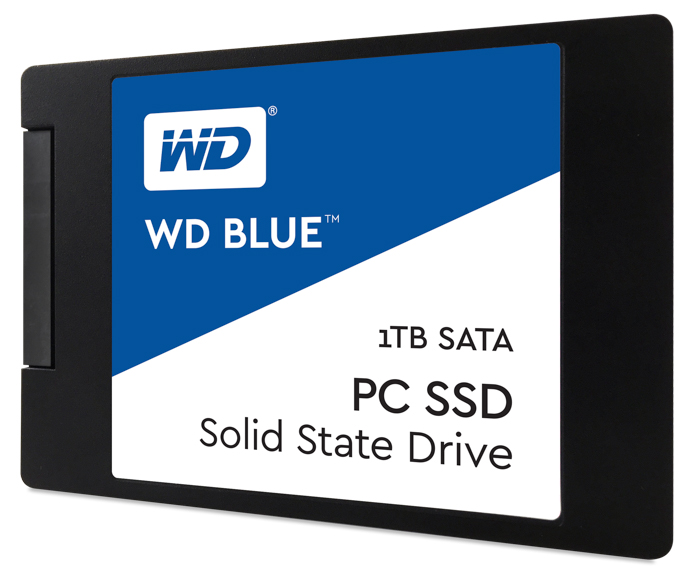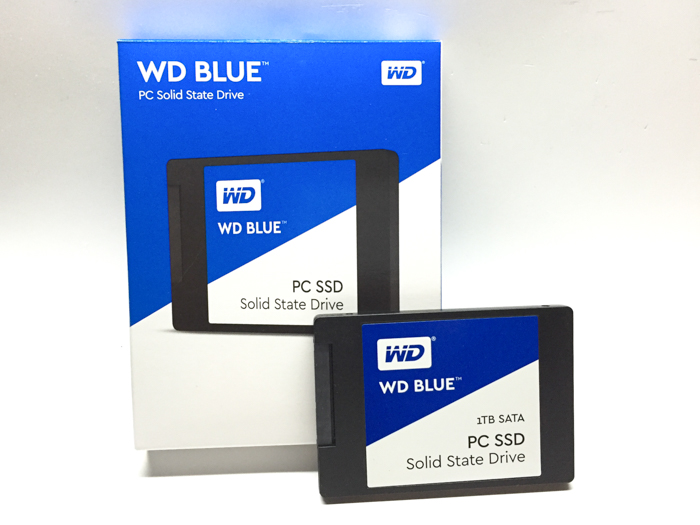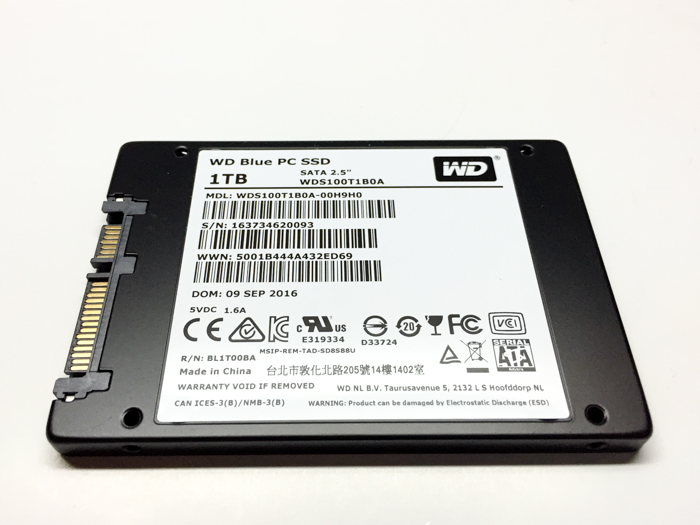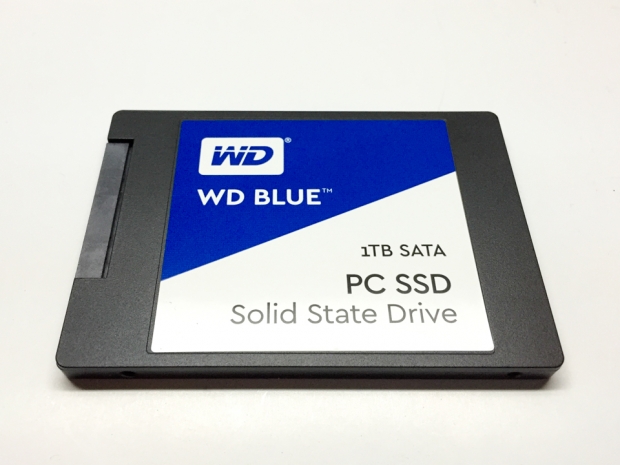Index
WD Blue

This review focuses on the WD Blue, including listed features, performance specifications and benchmarks. According to the company’s product manual, these drives are designed for high endurance scenarios with heavy workloads ranging between 40GB and 80GB per day of written data.
Packaging and specifications

The WD Blue 1TB 2.5-inch SATA III solid state disk provided by Western Digital comes with white and blue packaging that shows drive size and warranty information on the front, and model number and form factor on the back.
The packaging also classifies the company’s storage products into four segments – WD Blue for mainstream PCs, WD Black for performance PCs, WD Red for NAS devices, and WD Purple for surveillance.
The WD Blue and WD Green are the company’s first SSD products since it acquired SanDisk, and as such it has not made any announcements yet for the other segments. The prospects for additional WD-branded flash memory products will result from the initial market response and sales numbers moving into the next several quarters. It is possible that more SSD products may be announced at CES in just a few months or even Computex in the summer, but this will depend on company strategy, reaching the right price-to-performance targets, and meeting any related NAND flash supply levels going forward.
The 2.5-inch SATA III version of the drive measures 7mm thin by 69.85mm wide by 100.2mm tall (0.28 x 2.75 x 3.94 inches) and is rated at 70mW of average active power, 4.9mW to 9.7mW in devSlp (Device Sleep) mode, and 42mW to 52mW in Slumber mode.
Operating temperature ranges between 0C and 70C, and the drive is rated with a mean-time before failure (MTTF) rating of 1.75 million hours, or about the same as SanDisk’s X400, Ultra II, SSD Plus and Z410. It can be noted that Micron’s M510DC and M500DC and Corsair’s Force GS series are rated at 2 million hours, but the number is not always indicative of actual performance and may vary depending on workload type and gigabytes of throughput per day consumed by the user.




